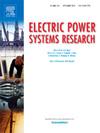将先进的机器学习算法应用于离网混合可再生能源系统的太阳能发电预测
IF 4.2
3区 工程技术
Q2 ENGINEERING, ELECTRICAL & ELECTRONIC
引用次数: 0
摘要
直接正常辐照度(DNI)的准确预测对于离网可再生能源微电网的有效规划和运行至关重要。本文提出了一种新的混合模型,将Mountain Gazelle Optimizer与Transformer架构(MGO-Transformer)相结合,显著提高了DNI预测的准确性。应用于太阳能资源丰富的新疆库车地区,该模型的决定系数为0.998,均方根误差为19.94,平均绝对百分比误差为0.12,优于常规方法。利用增强的预测输出,设计了一个优化的离网微电网,以满足该地区的电力和氢需求。该系统包括光伏(PV)面板、风力涡轮机、电解槽、储氢装置、锂离子电池和转换器。仿真结果表明,该电站年发电量为1,671,030千瓦时,其中光伏发电占总产出的97.7%。电解槽每年可生产27329公斤氢气,完全满足系统对氢气的需求。经济分析显示了强劲的性能指标,包括1.93美元/千瓦时的平准化能源成本和5.26美元/千克的平准化氢成本。这项工作强调了基于机器学习的预测在优化微电网配置方面的价值,以实现偏远地区可持续和经济上可行的能源和氢气生产。本文章由计算机程序翻译,如有差异,请以英文原文为准。
Incorporating advanced machine learning algorithms into solar power forecasting in off-grid hybrid renewable systems
Accurate forecasting of Direct Normal Irradiance (DNI) is essential for the efficient planning and performance of off-grid renewable energy microgrids. This study introduces a novel hybrid model that integrates the Mountain Gazelle Optimizer with Transformer architecture (MGO-Transformer) to significantly improve the accuracy of DNI prediction. Applied to Kuqa, Xinjiang, a region with abundant solar resources, the model outperforms conventional approaches, achieving a coefficient of determination of 0.998, root mean square error of 19.94, and mean absolute percentage error of 0.12. Using the enhanced forecasting output, an optimized off-grid microgrid is designed to meet the area’s electricity and hydrogen demands. The proposed system incorporates photovoltaic (PV) panels, wind turbines, an electrolyzer, hydrogen storage, lithium-ion batteries, and a converter. Simulation results indicate an annual energy production of 1,671,030 kWh, with PV contributing 97.7% of the total output. The electrolyzer produces 27,329 kilograms of hydrogen per year, meeting the full hydrogen demand of the system. Economic analysis reveals strong performance metrics, including a Levelized Cost of Energy of 1.93 $/kWh and a Levelized Cost of Hydrogen of 5.26 $/kg. This work underscores the value of machine learning-based forecasting in optimizing microgrid configurations for sustainable and economically viable energy and hydrogen production in remote regions.
求助全文
通过发布文献求助,成功后即可免费获取论文全文。
去求助
来源期刊

Electric Power Systems Research
工程技术-工程:电子与电气
CiteScore
7.50
自引率
17.90%
发文量
963
审稿时长
3.8 months
期刊介绍:
Electric Power Systems Research is an international medium for the publication of original papers concerned with the generation, transmission, distribution and utilization of electrical energy. The journal aims at presenting important results of work in this field, whether in the form of applied research, development of new procedures or components, orginal application of existing knowledge or new designapproaches. The scope of Electric Power Systems Research is broad, encompassing all aspects of electric power systems. The following list of topics is not intended to be exhaustive, but rather to indicate topics that fall within the journal purview.
• Generation techniques ranging from advances in conventional electromechanical methods, through nuclear power generation, to renewable energy generation.
• Transmission, spanning the broad area from UHV (ac and dc) to network operation and protection, line routing and design.
• Substation work: equipment design, protection and control systems.
• Distribution techniques, equipment development, and smart grids.
• The utilization area from energy efficiency to distributed load levelling techniques.
• Systems studies including control techniques, planning, optimization methods, stability, security assessment and insulation coordination.
 求助内容:
求助内容: 应助结果提醒方式:
应助结果提醒方式:


